The BASIC Handbook

Published 1986
[ Technical researcher and writer. ] The quintessential BASIC encyclopedia. Every BASIC command, function, and operator, in every dialect known, was included. Unlike other CompuSoft books that doted on the beginning programmer, the BASIC Handbook was a no-nonsense, to-the-point affair weighing in at nearly 900 pages. The first edition was published in 1978. I worked on the third and last edition.
Learning BASIC for the Macintosh
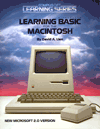
Published 1985
[ Technical researcher and writer. ] In 1984, we had one of the first Macintoshes (an original, 128K Mac) before they were available to the public. Because of my Apple II background, I was selected to research this rendition of the BASIC manuscript. Microsoft BASIC 2.0 on the Mac was so different than anything before it, the book literally required a complete rewrite. I did my best to manufacture prose in the witty Lien style, an exercise that gave me confidence to write on my own.
Learning Apple II BASIC
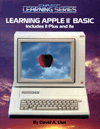
Published 1984
[ Technical researcher and writer. ] This is the book I really wanted to do because I knew Applesoft BASIC quite well. Although not as radical as the Mac, the Apple II was a big departure from the TRS-80 upon which the original manuscript was based. As a result, much rewriting and new text was needed. There’s even a chapter on loading and saving programs to cassette tape! Gads.
Learning IBM BASIC
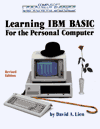
Published 1984
The original IBM PC was the great, great grand daddy of most of the computers in use today. In 1984, we knew that IBM’s initial foray into the world of personal computers was a significant leap and would bring BASIC to a wider audience. This book covered “BASICA” for the PC and its diminutive and unsuccessful counterpart, the funky IBM PCjr. If you remember the PCjr, with its chiclet keyboard, you’re an old timer or have an exceptionally good memory.
Learning TRS-80 Model 4/4P BASIC
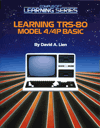
Published 1984
[ Technical researcher and writer. ] This book was my first solo research project. The TRS-80 Model 4/4P was an upgrade to the Model III. I really couldn’t stand the TRS-80 Model III on which we wrote all of our manuscripts in a program called Scripsit. The floppy drives were frustratingly temperamental, and we were constantly hauling them to the Radio Shack Computer Center for repair. The tech there was a chain-smoker, and the machines always came back smelling like an ashtray. No wonder the drives went kaput so often.
The TRS-80 Model 100 Portable Computer
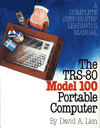
Published 1983
[ Technical researcher and writer. ] This was my first team research project at CompuSoft, and what an interesting one to start with. The Model 100 was the most innovative computer to come out of Tandy’s Texas headquarters in years. The size of a notebook, it was the precursor to today’s palmtop computers, complete with address book, telecommunications features, and, of course, built-in BASIC language. Dr. Lien routinely traveled the world with his Model 100, dialing into the office from afar to exchange email with staff. This was more than a decade before the Internet started to take off.
Trivia: CompuSoft’s office email system ran on an Apple II with Bill Blue’s Online messaging software. It later was replaced by the software I wrote which eventually evolved into ProLine. This confluence of events marked a twenty year (and counting) association with Bill Blue. He later started United Software Industries, Inc., where I worked on the MouseTalk application as an assembly language programmer. In 1993, we teamed up to create CTSnet.
